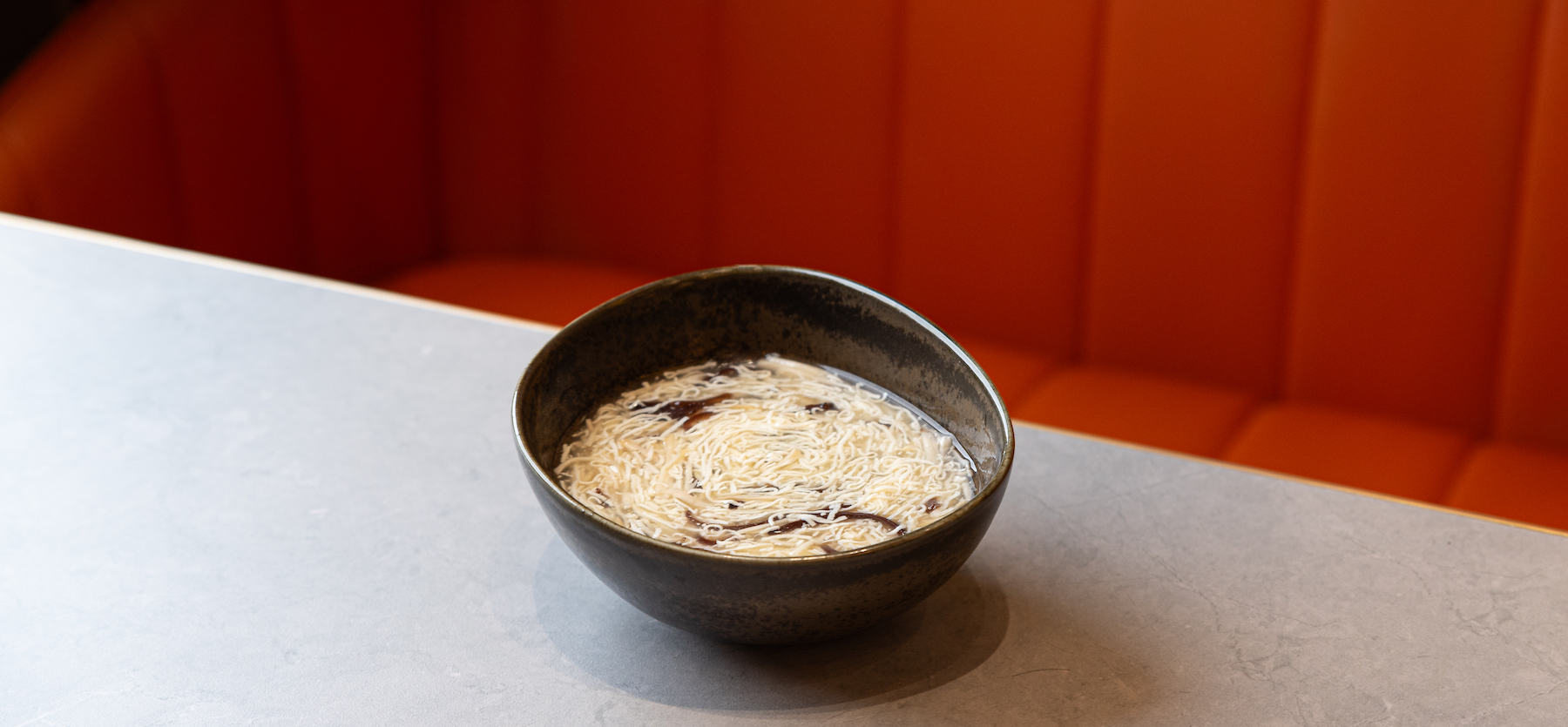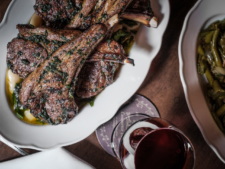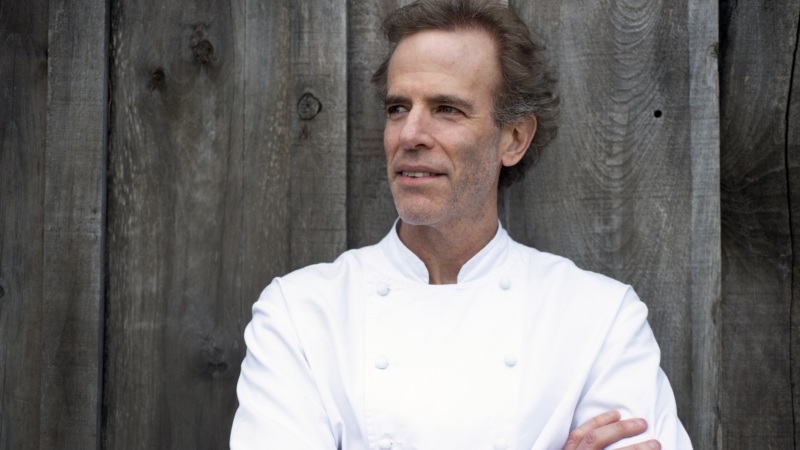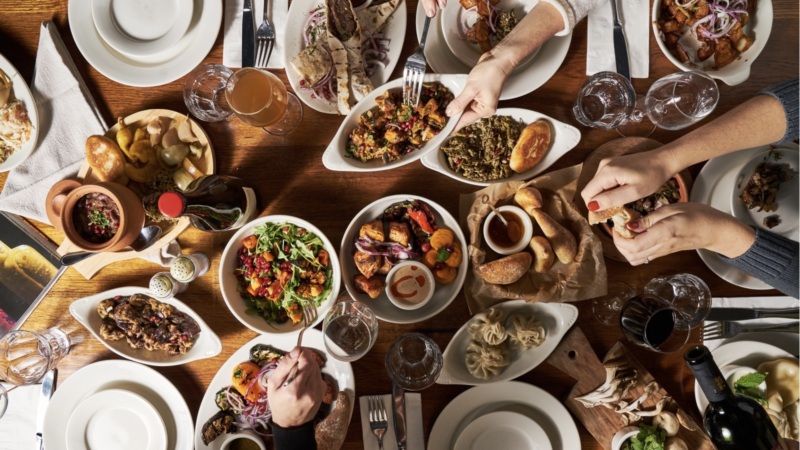
How Yao Takes Contemporary Cantonese Cuisine to New Heights, in Five Dishes
“Modernized” or “elevated” comfort food is a concept we see a lot of in New York’s restaurant scene, sometimes to underwhelming effect and sometimes to our complete delight. What makes the difference is the degree of specificity: Is it the quality of ingredients that’s elevated? The cooking techniques? Are different flavor palates being combined thoughtfully, or mostly for novelty value? What exactly does it mean to have “elevated” or “modernized” food, anyway?
At Yao, a new Financial District restaurant that bills itself as “modern Cantonese,” specificity defines the menu and truly sets it apart from its contemporaries. The bright, glamorous space, located inconspicuously inside a Courtyard by Marriott, is the latest project of chef Kenny Leung and business partner Thomas Tang, the team behind upscale SoHo Cantonese spot August Gatherings.

Leung’s approach is cosmopolitan, combining global techniques and ingredients in a way that’s surprising and yet makes complete sense. Originally hailing from Guangzhou, China, Leung has called New York home since 1988, and he’s also traveled extensively throughout Europe — all of which shows in the food. The menu at Yao deftly combines classic French and Chinese cooking techniques with Cantonese, Italian, Spanish, and Portuguese ingredients and flavors, making for dishes that are as clever as they are elegant.
Yao’s menu is fairly extensive, but Leung, along with chief marketing officer Frances Fan and general manager Henry Li, took us through five of the restaurant’s signature dishes to give you a sense of what to expect.


1. Wensi Tofu Soup
Upon first glance, this dish looks like it’s filled with tiny, vermicelli-like noodles in a rich bone broth — but those “noodles” are actually tofu that’s been sliced very, very finely and uniformly. Wensi tofu soup dates back to 18th-century Jiangsu, a province on the eastern coast of China, but despite being a time-honored classic, it’s probably not something the average New Yorker has tasted before.
“I don’t think there’s any other Chinese restaurant [in New York] offering this technique,” Fan says. That’s probably because it requires some highly polished knife skills, not to mention incredible attention to detail. Li tells Resy that each bowl is the product of some 10,000 knife strokes. The result is a slippery, noodle-like texture that gives each sip a smooth, almost creamy consistency. It’s a testament to Leung’s proficiency in classic Chinese techniques, but it’s also a deliciously cozy, warm way to start your meal. If you come for the tasting menu, you’ll try a version that also includes Alaskan king crab, contributing a touch of oceanic sweetness to the savory dish.


2. Assorted Organic Mushrooms in Hot Stone Pot
You might not expect a dish of mushrooms and rice to be particularly exciting, but you’d be wrong. This dish, which happens to be vegan, is a symphony of crave able, comforting flavors and textures. One reason for that is the stone pot — served piping hot, the rice and five-mushroom mixture is essentially still cooking when it gets to your table. As a result, some crispiness is introduced to the otherwise soft, tender rice.
“On the bottom, it’s getting caramelized,” Li notes. “So as it sits, it starts to harden, and we like that crispiness. It’s almost a little bit chewy as well.” If you order this, you’ll likely find yourself scraping the stone pot to get every last bit of that crispy, umami, mildly sweet goodness.
Another textural component that makes this seemingly simple dish stand apart is Leung’s blend of two different kinds of rice: “If we just use jasmine, which is very flavorful,” Li notes, “it doesn’t have the glutinousness that shorter rice does. So, you get a little chewiness, a little firmness, and the flavor of the jasmine.” The contrast between the crispy, caramelized bits, the soft, chewy rice, and the meaty mushrooms turns what may sound like a relatively standard dish into something complex, layered, and delicious.


3. Snow Pea Leaves with Chanterelle
Veggie lovers, right this way. The next dish to land on your table should be a giant bowl of cooked greens, resting in a cloudy, whitish broth and topped with mushrooms cooked to golden brown perfection. The broth, Li tells us, is sort of congee-adjacent — a starchy porridge made from rice — although in this case, the rice is milled into a powder first, so it’s a fairly homogeneous, smooth texture. That sticky, starchy liquid binds itself to the snow pea leaves, tying all the elements together and turning the leafy greens into a filling, comforting dish.
“So, you know the flat snow pea? This is the tip of it,” Li says of the greens. “It’s very, very tender. And if you overcook this, it becomes very chewy, like strings.” But of the dish in front of us, he says, “When you bite into it, it’s just perfect.”
Leung excuses himself for a moment and returns with a bag of sushi rice, pouring a few grains into a pile on a plate, and explaining how these tiny, round grains are specifically milled for the congee-esque broth.
“This rice, a lot of the top sushi chefs like to use it. It’s imported from Japan,” Li explains. “It’s this rice that’s milled, instead of using cornstarch or anything like that. It will give you this thicker consistency, so when you eat the vegetable, it almost marries the flavors to it. And then the mushrooms give us another profile and flavor.”


4. Traditional Chinese Salt-Baked Free-Range Chicken
Li stresses that in Cantonese cuisine, chicken is a must-have protein for special events like birthdays and holidays. It’s fitting, then, that Yao’s salt-baked chicken comes with its own bit of theatrical flair. When servers first bring the dish to the table, it’s presented in a big black pot, opened to reveal a lump of parchment paper resting in a small mountain of salt. The server slices the paper open to reveal a steaming, juicy chicken, which is then taken back to the kitchen to be sliced before returning to the table.
Li explains that this preparation is sort of akin to classic Cantonese poached chicken, but rather than water, it’s the heat of the salt that cooks the meat. “It gives that saline, and also flavor because it’s not just a coarse salt, it’s also a seasoned salt. So the chicken absorbs that while it’s getting cooked. So instead of, like, baking, it’s just slowly kind of poaching with dry.”
“In Chinatown, when you walk by a lot of the barbecue places, you see the duck and chicken hanging in the window to make the skin dry, so it can get crispy. That particular method is also applied to this chicken,” Li notes. “Before we start this chicken, we dry it in the refrigerator for one day. It starts to eliminate some of the fat between the skin and the meat, so the skin can be a little crispier.”


5. Fusilli with Wild Octopus and Bone Marrow
You probably aren’t expecting to see fusilli on the menu at a Cantonese restaurant, but this dish, which he made famous over at August Gatherings, is one that truly belies Leung’s talent in making unlikely pairings. The key is how he swaps in ingredients that serve similar functions, but from various global cuisines.
“[Chef Leung] chose a Spanish octopus, but the way he cooked it — it’s sous vide, so the technique is unique,” Li explains. “Also, one thing I like about this is because in Italian cuisine, they use anchovies, right? In Eastern cuisine, we use fish oil. So here, he’s using salted fish to give it that umami.”
Li explains that in Chinese cuisine, it’s the North that has noodles on lock, while in the South, where he and Leung come from, rice dishes are more prominent. But the scarcity of noodle dishes in Southern cuisine sort of gave Leung a blank slate to innovate.
“Kenny has tried many different noodles in Chinese cuisine. Speaking on behalf of the Southerners, the way we like noodles is with kind of like a tender, bouncy texture. And to achieve that, many people use sodium bicarbonate. Now when you use sodium bicarbonate, it has a chemical taste, so that’s why if you go to eat at a local noodle shop, sometimes, you taste that kind of alkalinity, the sodium bicarbonate, and Kenny didn’t want that. So how do you achieve that very tender, kind of chewiness?”
Leung eventually found that texture in Italian pasta, of all places, discovering that fusilli has the sort of bounce he was seeking. It gets tender enough for flavor to penetrate, and the rolled-over shape is perfect for holding on to that delicately briny sauce.
Yao is open daily from 11:30 a.m. to 10 p.m.
Ariana DiValentino is a writer, filmmaker, and actor based in Brooklyn. Follow her on Instagram, X (formerly Twitter), and TikTok. Follow Resy, too.































